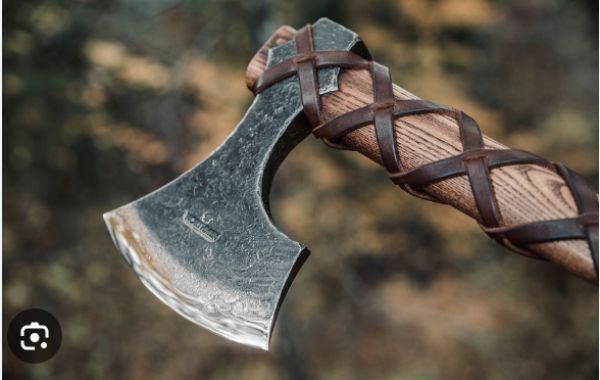Introduction: The Viking age, a tumultuous era of exploration, conquest, and cultural exchange, saw the rise of iconic weapons wielded by Norse warriors. From swords and axes to spears and shields, Viking weaponry played a pivotal role in shaping the course of history. Today, the legacy of these ancient weapons lives on in modern interpretations crafted with a blend of tradition and innovation. Let's explore how Viking weapons made now compare to those crafted a thousand years ago.
Ancient Arms: Weapons of the Viking Age (1000 Years Ago): A millennium ago, Viking weapons were crafted by skilled artisans using traditional techniques and materials available at the time. Swords, typically double-edged and forged from high-carbon steel, were prized possessions of elite warriors and chieftains. Axes, with their wide, flat blades and sturdy hafts, were versatile tools of war and everyday life, while spears provided reach and thrusting power on the battlefield. Shields, made from wood and reinforced with iron or leather, offered protection against enemy attacks.
Craftsmanship and Functionality: Viking weapons of the past were crafted with meticulous attention to detail and functionality. Swords were designed for slashing and thrusting, with blade shapes optimized for cutting through armor and flesh alike. Axes were balanced for chopping and cleaving, capable of delivering devastating blows with precision and force. Spears featured spearheads with reinforced tips and socketed connections to the shaft, ensuring durability and stability in combat.
Materials and Construction: Viking weapons were typically forged from iron or steel, with blade edges hardened through quenching and tempering techniques. Handles were crafted from wood, bone, or antler, fitted with metal or leather reinforcements for added strength and durability. The construction of Viking weapons relied heavily on manual labor and traditional smithing methods, resulting in weapons that were sturdy, reliable, and effective in battle.
Modern Interpretations: Weapons Inspired by the Vikings (Today): Today, Viking weapons continue to inspire artisans, craftsmen, and enthusiasts around the world, leading to the creation of modern interpretations that blend historical authenticity with contemporary design and materials. While some modern Viking weapons are faithful replicas of their ancient counterparts, others incorporate innovative features and materials for improved performance and aesthetics.
Advancements in Metallurgy and Technology: Modern Viking axes often benefit from advancements in metallurgy and manufacturing technology. High-quality steel alloys offer superior strength, edge retention, and corrosion resistance compared to iron or low-grade steel used in the past. Computer-aided design (CAD) software allows artisans to prototype and refine weapon designs with precision, optimizing blade geometry for optimal balance and performance.
Artisanal Craftsmanship and Customization: While mass-produced replicas of Viking weapons are readily available, many enthusiasts prefer artisanal craftsmanship and custom-made pieces tailored to their preferences. Modern blacksmiths and bladesmiths use traditional forging techniques alongside modern tools and equipment to create bespoke weapons that are unique in design and character. From hand-forged sword blades to intricately carved axe handles, each piece is a testament to the skill and creativity of its maker. Viking axe
Cultural Revival and Appreciation: The resurgence of interest in Viking culture and history has led to a renewed appreciation for Viking weapons as symbols of heritage and identity. Historical reenactments, living history events, and cultural festivals provide opportunities for enthusiasts to experience the thrill of wielding Viking weapons in a controlled and educational setting. Museums and archaeological sites showcase ancient weapons as artifacts of antiquity, offering insights into the technology, craftsmanship, and martial prowess of the Viking age.
Conclusion: While a thousand years may separate us from the Viking age, the legacy of Viking weapons endures as a testament to the ingenuity, craftsmanship, and martial spirit of the Norse people. Whether ancient relics or modern interpretations, Viking weapons continue to captivate and inspire, bridging the gap between the past and the present for generations to come. Forged Viking axe







